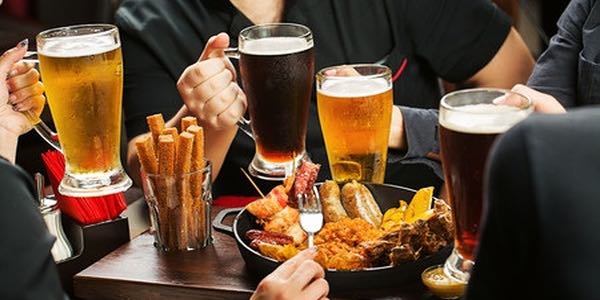Pairing Craft Beers With Foods
Its All The Craze
These days pairing craft beers with different foods seems to be gaining momentum. From brew masters to chefs, discovering new and delicious food and beer pairings is a way to elevate the dining experience – one sip at a time.
It’s hard not to notice the growth in craft beer breweries. You find them popping up all over America. With this growing industry, some of these beers have made it onto the menu of several mid-range to upscale American restaurants.
Beer on the Menu
The additions of beer to these menus is more than just an afterthought. Today, home brewers, beverage directors, brew masters, and chefs have created full menus around these flavorful beverages.
If you think about it, beer may actually be more food-friendly than some wines. There is definitely more room for flavor varieties. After all, the winemakers really only have one ingredient to play with, grapes. On the other hand, beer makers can experiment with barley, hops, yeast, as well as other spices, chocolates, fruits, nuts, and even vegetables.
Whether you want to do some research, go to tastings, or simply experiment at home, craft brews are just a short trip away.
Beer and Food Pairing Issues
Complimentary or Contrasting Flavors?
Attempting to find commonalities in pairing, such as a spicy Thai dish with a spicy pale ale. The idea an enjoyable match. The notes in one sip elicit flavors in past or future bites.
With the opposite approach, contrasting flavors, can be pleasurable in a ying-yang sort of way: A bitter stout is a classic match with raw oysters, perhaps cutting the sweetness of the shellfish. Remember that you can get your dominant food flavors from several different things: protein, the sauce, or even the method of preparation (pan frying vs. grilling, for example).
Temperature, Texture, and Timing
The temperature of a beer when it is served can be paramount to its taste. Always try to serve a beer at it’s recommended serving temperature for it’s optimal taste, even if you have to let the beer sit outside of the refrigerator for fifteen minutes before serving.
The bubbles from certain beers can cut through fatty and fried foods, so choose for a more carbonized beer when eating richer foods. As an example, pizza can be a greasy match that requires something that will stand up to the acids of the tomato and help cut through the fatty cheeses without overwhelming the dish. Ales, pilsners and lagers are your best bets with this.
Lastly, timing can mean everything. If you are serving different beers with different courses, be sure to start with a lighter beer and work your way towards the darker beers. Your palate will thank you course after course.
Beware Of Matching Regional Beers
Just because you are eating at a Mexican restaurant, it doesn’t mean you should drink a “Mexican” beer. Not all regional beers are the best pairing solutions for all dishes. For example, some beer experts advise to drink a stronger and fruitier beer while eating spicy foods.
Most Important Rule – Drink What You Like
If you are unsure which type of beer pairs well with your dish you should drink what you like and you won’t be dissatisfied. That being said, don’t be afraid to experiment. There really are no wrong choices.
Cheers!


